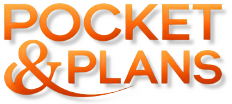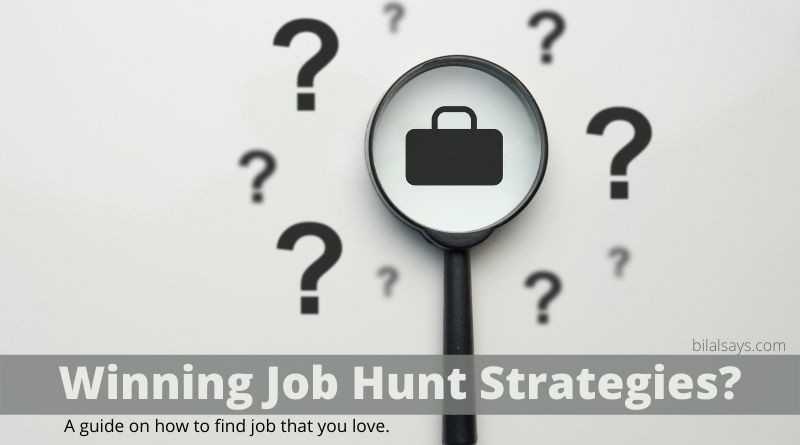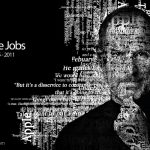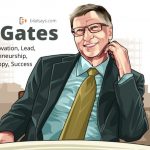Navigating Career Gaps in 2025 & Position of Job Market
Overcoming Unemployment Challenges & Mastering Modern Job Search Strategies
Unemployment—whether voluntary or involuntary—remains one of life’s most stressful experiences, impacting not just finances but mental well-being. In today’s fast-evolving job market, where AI disruption and the Great Resignation have reshaped hiring, prolonged career gaps can trigger anxiety, depression, and burnout, while eroding confidence and professional networks. Studies show that 63% of job seekers report heightened stress during extended unemployment (LinkedIn, 2023), with outdated skills and “quiet quitting” trends compounding the struggle to re-enter the workforce.
The Hidden Costs of Unemployment
- Mental Health Crisis: Chronic joblessness correlates with a 40% higher risk of anxiety disorders (WHO, 2023). Burnout from relentless rejections or underemployment is rampant.
- Skill Decay: In an era of AI-driven hiring, gaps longer than six months can leave candidates behind in high-demand fields like cybersecurity or green energy.
- Social Stigma: 55% of professionals feel judged for career breaks, leading to isolation and eroded self-esteem (Glassdoor, 2024).
Why Career Gaps Happen
- Voluntary Unemployment: Fueled by “The Great Resignation 2.0,” many leave toxic workplaces to prioritize mental health, pursue passion projects, or upskill for hybrid roles.
- Involuntary Gaps: Layoffs due to automation, industry downturns (e.g., tech cuts in 2023), or mismatched skills in competitive markets like AI and blockchain.
Outdated vs. Modern Job Search Strategies
❌ Old Approach: Mass-applying on job boards, relying on static resumes, and waiting for recruiters.
✅ 2024 Winning Tactics:
- Leverage AI Tools: Optimize LinkedIn profiles and resumes with keywords like “remote work flexibility” or “generative AI literacy” to bypass ATS filters. Tools like Teal or Jobscan analyze job descriptions for tailored applications.
- Build a Personal Brand: Share industry insights on LinkedIn or TikTok. A standout profile with micro-credentials (e.g., Coursera’s AI certifications) boosts visibility.
- Network Strategically: Attend virtual events on platforms like Hopin or LinkedIn Live. Use Coffee Chat AI apps to connect with hiring managers.
- Future-Proof Your Career: Target booming fields—healthtech, renewable energy, or cybersecurity—via bootcamps like General Assembly or Springboard.
Turn Setbacks into Comebacks
- Address Mental Health: Apps like Calm or BetterOffer provide free therapy sessions for job seekers.
- Reframe Gaps Positively: Highlight freelance gigs, certifications, or caregiving roles as “strategic career pivots” in interviews.
- Tap the Gig Economy: Platforms like Upwork or Fiverr help maintain income and skills during transitions.
Success Story: From Layoff to LinkedIn Luminary
After a 2024 layoff, marketing pro Priya Roy:
- Earned a Google Analytics 4 certification in 8 weeks.
- Posted LinkedIn videos on “AI in Digital Marketing,” gaining 10K followers.
- Landed a remote role at a SaaS startup with a 30% salary hike.
Key Takeaways
- Upskill or Fall Behind: 78% of employers prioritize candidates with AI and data literacy (World Economic Forum, 2024).
- Network > Applications: 70% of roles are filled via referrals (Forbes).
- Mental Health Matters: Burnout is a red flag for employers—showcase resilience and growth.
Unemployment isn’t a dead end—it’s a detour. By embracing hybrid job market trends and AI-powered tools, you’ll transform gaps into stepping stones.
Actionable Easy Job Hunt Steps
The job market is undergoing a seismic shift. By 2025, automation, AI, and hybrid work models will redefine how we search for jobs. According to the World Economic Forum, 50% of workers will need reskilling by 2025, and roles in AI, green energy, and healthcare will dominate. But don’t panic—this guide breaks down the job hunt process into simple, actionable steps to help you land your dream role, even if you’re starting from scratch.
Step 1: Define Your Dream Job
Why It Matters
Clarity is power. Without a target, you’ll waste time applying to mismatched roles.
Action Steps:
- Self-Assessment:
- Use free tools like Myers-Briggs or StrengthsFinder to identify your skills and passions.
- Ask: What tasks energize me? What industries align with my values?
- Research Emerging Roles:
- Explore LinkedIn’s 2025 Jobs on the Rise Report (e.g., AI Ethics Officer, Renewable Energy Technician).
- Reverse-Engineer Job Descriptions:
- Study postings for your target role. Note recurring skills (e.g., Python, project management).
Pro Tip: Use ChatGPT or DeepSeek to analyze job descriptions and extract key requirements.
Step 2: Build a Future-Proof Skill Set
Skills That Matter in 2025
- Technical: AI literacy, data analytics, cybersecurity.
- Soft Skills: Emotional intelligence, adaptability, cross-cultural collaboration.
- Sustainability Skills: Carbon footprint management, ESG reporting.
How to Upskill:
- Free/Low-Cost Courses:
- Coursera’s AI For Everyone (Google).
- Udacity’s Digital Marketing Nanodegree.
- Micro-Credentials:
- Earn blockchain-verified badges (e.g., Credly) to showcase niche expertise.
- Learn While Applying:
- Volunteer for projects on Upwork or Catchafire to gain hands-on experience.
Interesting Stat: 74% of hiring managers prioritize candidates with micro-credentials (LinkedIn, 2025).
Step 3: Craft an AI-Friendly Resume & LinkedIn Profile
Why Traditional Resumes Fail in 2025
Applicant Tracking Systems (ATS) and AI tools like HireVue scan resumes in seconds.
Optimization Tips:
- Keyword Alignment:
- Mirror language from job postings (e.g., “cloud computing” vs. “server management”).
- Use tools like Jobscan to match your resume to ATS criteria.
- Quantify Achievements:
- Bad: “Improved sales.”
- Good: “Boosted Q3 revenue by 32% via targeted social media campaigns.”
- LinkedIn Hacks:
- Add a custom banner (Canva templates).
- Use hashtags like #OpenToWork (subtle green frame).
- Post industry insights weekly to build thought leadership.
Case Study: Priya, a marketer from India, landed a remote role at a U.S. tech firm after revamping her LinkedIn with AI-driven keywords and client testimonials.
Step 4: Leverage AI and Virtual Networking
Networking in 2025
- AI Tools:
- Teal: Matches your resume to jobs and suggests connections.
- Lunchclub: AI matches you with professionals in your field for virtual coffee chats.
- Virtual Events:
- Attend Meta’s Horizon Workrooms or industry-specific Discord servers.
Pro Tip: Send personalized LinkedIn messages:
“Hi [Name], I admired your post on sustainable tech. Could I ask for your advice on breaking into this field?”
Stat: 70% of jobs are filled through networking (Forbes, 2025).
Step 5: Ace the Hybrid Interview Process
2025 Interview Trends
- AI Interviews: Platforms like HireVue analyze facial expressions and tone.
- Virtual Reality Assessments: Companies like Accenture use VR to simulate job tasks.
- Values-Based Questions: “How would you handle an ethical dilemma in AI development?”
Preparation Strategies:
- Practice with AI: Use tools like InterviewPrep to simulate AI interviews.
- STAR Method: Structure answers as Situation-Task-Action-Result.
- Test Your Tech: Ensure your Wi-Fi, camera, and VR headset (if needed) work flawlessly.
Salary Negotiation Script:
“Based on my research, the market rate for this role is $X. Given my [specific skill], I propose $Y.”
(Use Salary.com or Glassdoor for 2025 salary benchmarks.)
Step 6: Stay Resilient and Adapt
Managing Rejection in 2025
- Mindset Shift: View “no’s” as data points. Ask for feedback via email:
“Could you share one area I could improve for future roles?” - Upskill During Gaps: Use downtime to earn certifications or freelance.
Stat: The average job hunt takes 5.2 months in 2025 (Bureau of Labor Statistics).
Case Studies: Real Success Stories
1. From Retail to AI Ethics: Maria’s Journey
- Challenge: Maria, 34, wanted to pivot from retail management to AI ethics.
- Steps:
- Completed Coursera’s AI Ethics Certification.
- Networked via Women in AI forums.
- Landed an entry-level role at a Boston AI startup.
- Key Takeaway: Leverage niche communities for mentorship.
2. Remote Work Success: Carlos in Mexico
- Challenge: Carlos sought a remote UX design role at a European firm.
- Steps:
- Built a portfolio on Webflow showcasing VR projects.
- Used Toptal to find freelance gigs.
- Negotiated a 4-day workweek.
- Key Takeaway: Remote roles require cultural adaptability and self-discipline.
FAQs: Your 2025 Job Hunt Questions Answered
Q1: How long should my resume be?
A: One page for <10 years of experience; two pages for executives.
Q2: Are cover letters obsolete?
A: 45% of hiring managers still read them (Indeed, 2025). Keep it under 250 words.
Q3: How do I explain career gaps?
A: Frame gaps as upskilling periods: “I took a sabbatical to earn a certification in X.”
Q4: Is remote work here to stay?
A: Yes—72% of companies offer hybrid roles (Gartner, 2025). Highlight remote collaboration skills.
Q5: Can I trust AI job platforms?
A: Use reputable tools like LinkedIn, Otta, and Wellfound (formerly AngelList).
Conclusion: Your Dream Job Awaits
The 2025 job market rewards agility, continuous learning, and authenticity. By following these steps—defining your goals, mastering AI tools, and building genuine connections—you’ll stand out in a competitive landscape. Remember, your dream job isn’t a destination but a journey of growth.
Call to Action: Start today! Download our Free 2025 Job Hunt Checklist to track your progress.
Useful Links
Internal Links:
- How to Invest Personal Savings in Stocks: A Simple Step-by-Step Guide for Beginners (2025)
- How to Turn Your Hobbies into a Profitable Side Hustle in 2025 and Beyond
External Links:
This guide blends practicality with inspiration, empowering you to navigate the 2025 job market with confidence. 🚀








One Response